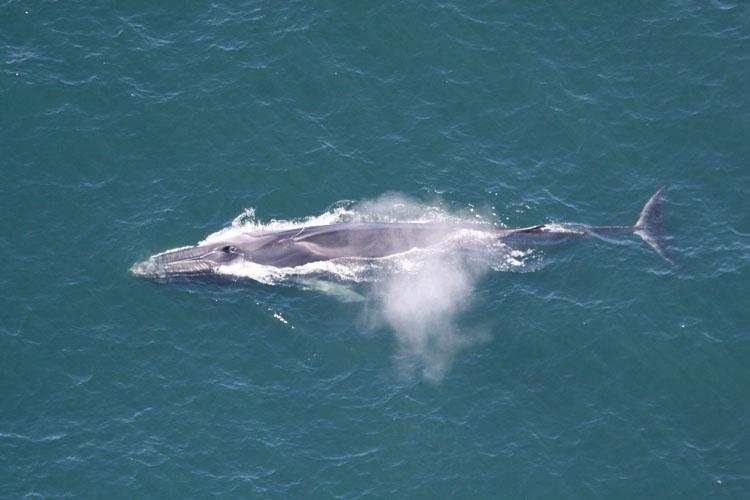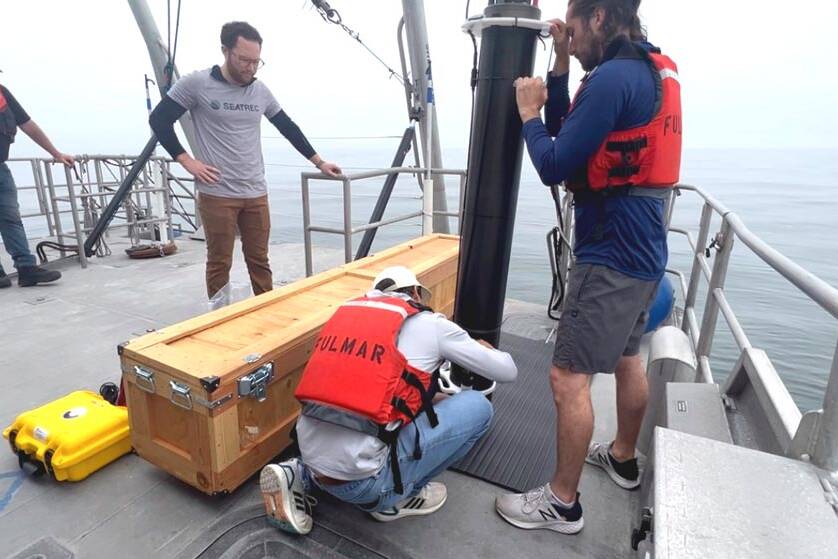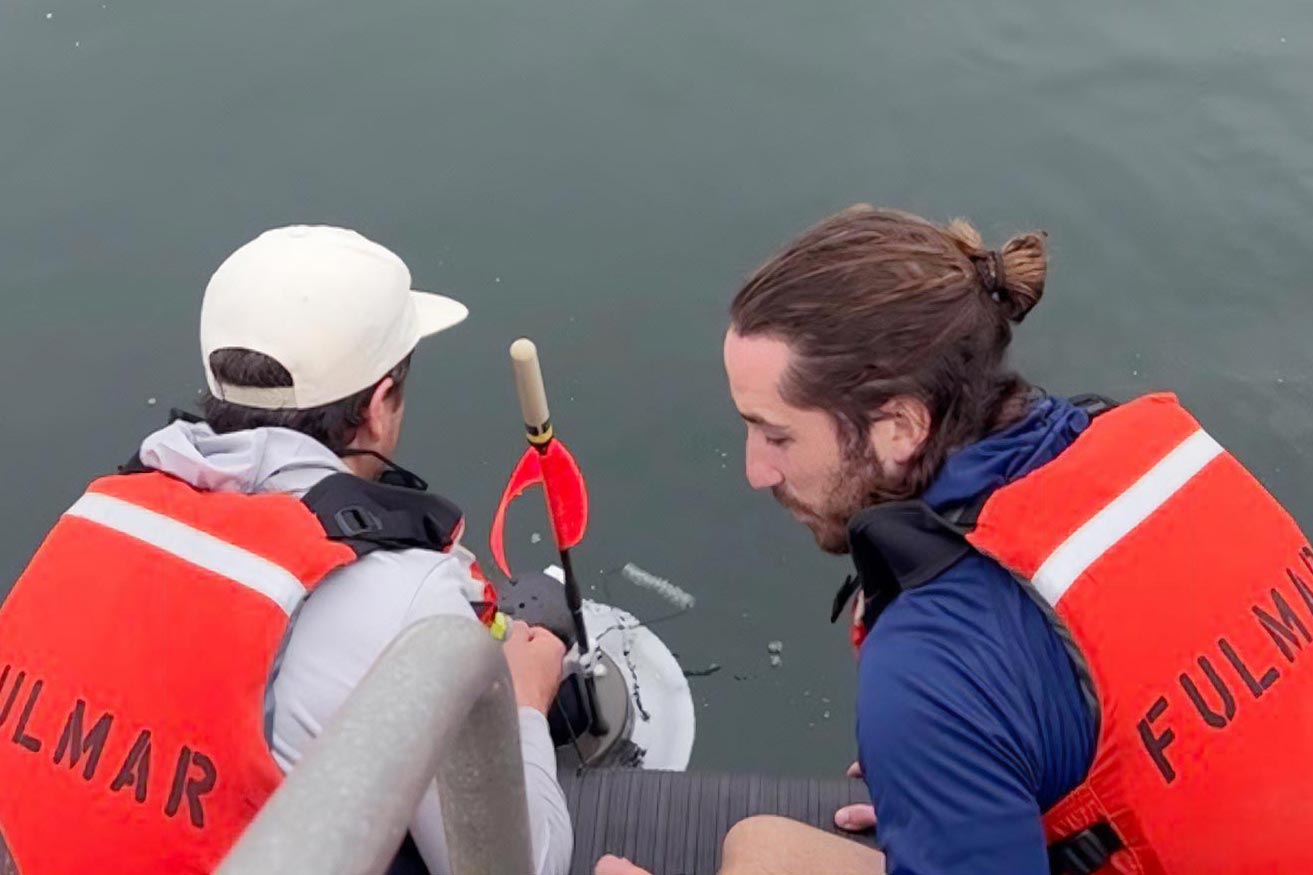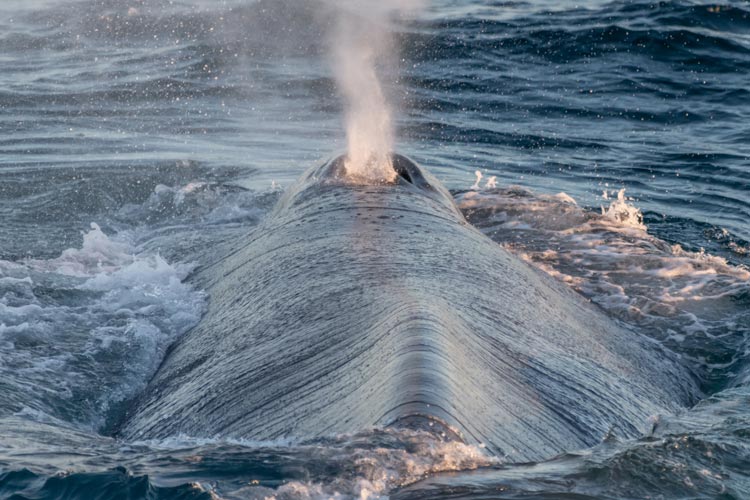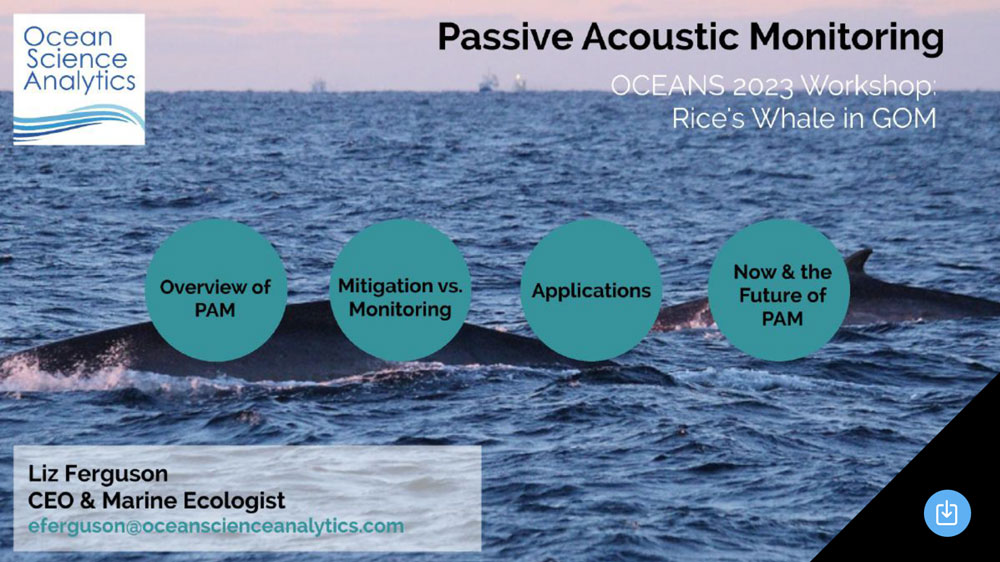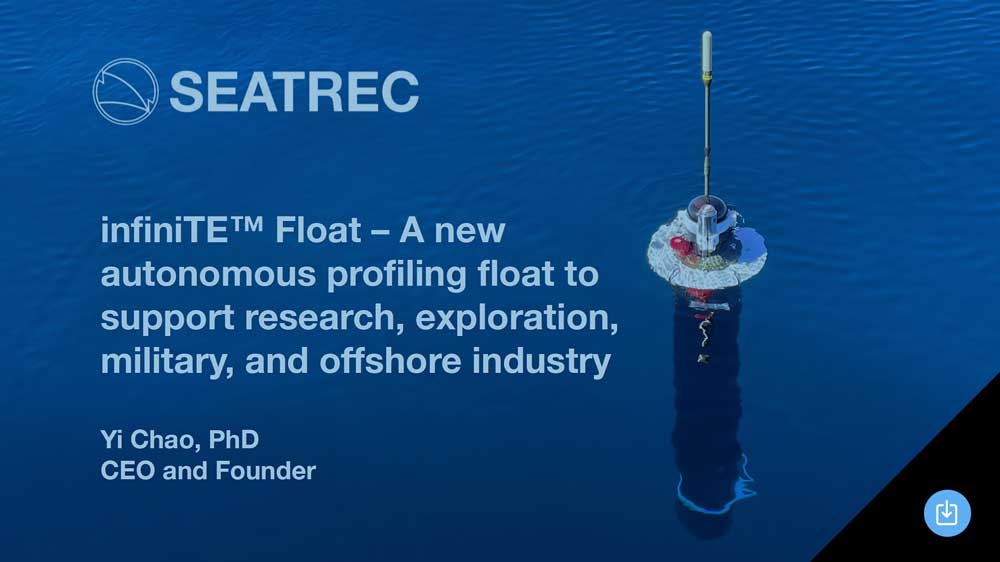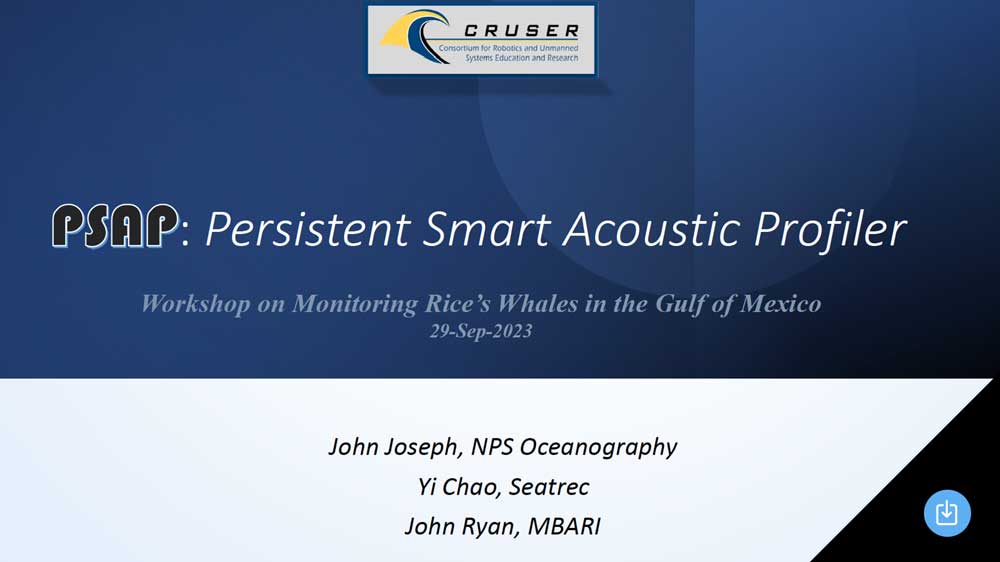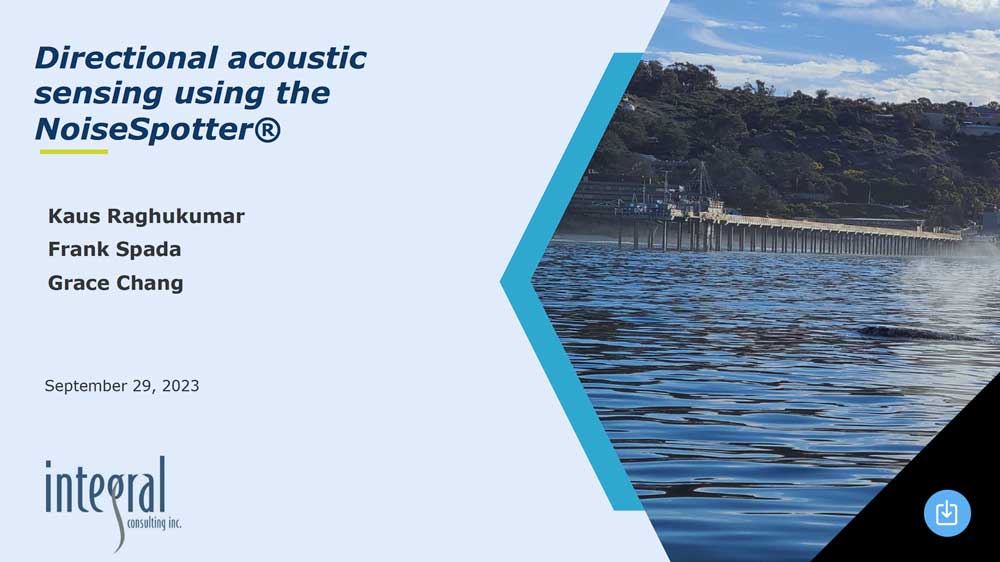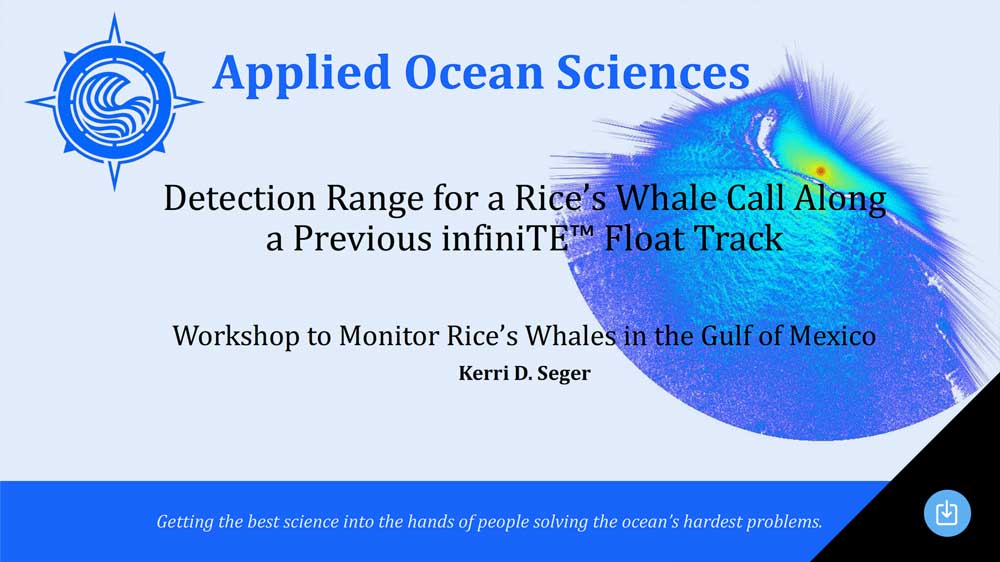Project WHALE
Bringing Hydrophones to Autonomous Profiling Floats
With Seatrec’s proprietary infiniTE™ float, scientists can now integrate hydrophones into autonomous profiling floats. This new functionality gives scientists the opportunity to easily deploy cost-effective solutions anywhere to monitor whale activity.
The Rice’s Whale
Inspired by the Gulf Blue Navigator (GBN) program, Seatrec has started a collective of dedicated scientists, engineers, innovators, and creatives driven by the pressing need to monitor the critically endangered Rice’s Whale.
There is an urgency to monitor Rice’s whales, a critically endangered species with a population in the double digits. Scientists from NOAA Fisheries have located Rice’s whales primarily in the northeastern Gulf of Mexico along the continental shelf between 100 and 400 meters. A single Rice’s whale was observed in the western Gulf of Mexico off the coast of Texas, suggesting that their distribution may occasionally include waters elsewhere in the Gulf of Mexico. It is encouraging to see that the FY 2023 budget for the NOAA Fisheries (under Marine Mammals, Sea Turtles, and Other Species, Protected Resources Science and Management) has included an allocation for researching the Rice’s Whale.
The Whale Collective
Seatrec hosted the first “Collaborative Workshop to Monitor Rice’s Whales in the Gulf of Mexico” on September 29, 2023, in Biloxi, Mississippi. Participants included the following scientists, engineers and artists:
- Lance Garrison and Melissa Soldevilla (NOAA Fisheries)
- Liz Ferguson (Ocean Science Analytics)
- Yi Chao and Marta Bulaich (Seatrec)
- John Joseph (Naval Postgraduate School)
- Kaus Raghukumar and Jennifer Pettis Schallert (Integral Consulting)
- Kerri Seger (Applied Ocean Sciences)
- Reginald Blaylock (University of Southern Mississippi)
- Cory Diane and Molly Tucker (National Geographic – Film)
- María Esther Jiménez López and Hiram Rosales Nanduca (Universidad Autónoma de Baja California Sur)
- Holley Muraco (Mississippi State University)
The overarching questions addressed in this meeting included:
- How frequently do Rice’s whales move outside the northeastern Gulf?
- How to establish a real-time monitoring network of Rice’s whales?
- How to process and manage the acoustic data?
- How to translate the scientific data to the public and engage the next generation of researchers?
There were five presentations:
The Rice’s Whale collective will have regular online meetings to discuss common interests and explore collaborative opportunities. The plan is to have the second “Collaborative Workshop to Monitor Rice’s Whales in the Gulf of Mexico” during the Ocean Sciences Meeting during February 2024 in New Orleans.

